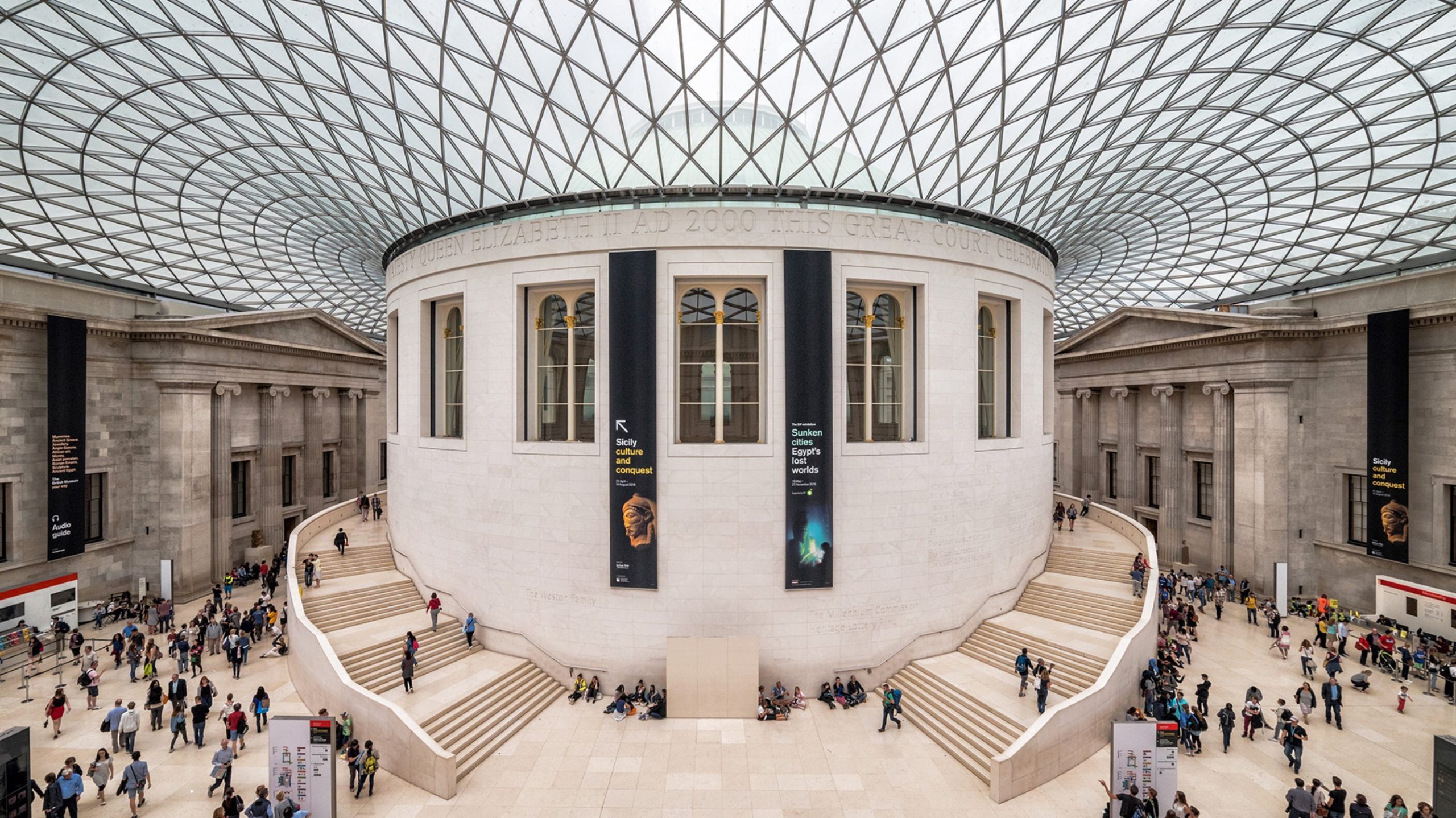In mid-July, at the height of London’s lockdown, the British Museum welcomed more than 300,000 Chinese visitors on a livestream journey through its vacant galleries offering intimate and unhindered access to the Rosetta Stone, Egyptian mummies, and the Parthenon Frieze.
Coordinated with Fliggy, the travel arm of Chinese tech giant Alibaba, the livestream delivered Chinese audiences an intimate and dynamic experience straight to their mobile phones. The livestream was hosted on Taobao, Alibaba’s e-commerce platform, with viewers able to buy cultural products in real time through the app.
The livestream’s success was the subject of Jing Culture & Commerce’s most recent webinar: Digital Connections: What Arts Organizations Can Learn From China’s Livestreaming Trend. Co-hosted with the British Museum and Alibaba, the hour-long conversation delved into how the project was executed, what arts organizations can learn from it, and why livestreaming will endure long into the future.
Here are JCC’s key takeaways from the event.
Livestreaming is Not a Passing Trend
The pivot to livestreaming that swept the gamut of Chinese industries from real estate agencies and car dealerships to travel companies and cultural institutions might have been fueled by an initial need to survive, but it’s now a fully-integrated long-term engagement strategy. The proof? This year’s Singles Day, China’s largest online shopping holiday on Nov 11 hosted by Alibaba, is leaning heavily into livestreaming with 400 company executives and 300 celebrities set to host broadcasts.
Habits developed by consumers in China’s commercial sphere are translating to expectations in cultural ones. As Fliggy’s livestreams demonstrated, arts organizations now have a dynamic new medium to boost exposure and tell stories.
Key Quote
“Livestreaming now needs to be taken a step further, to be done with flair, new thinking and creativity. There is so much to explore with livestreaming, can we integrate VR, AR, gaming?” Sebastien Badault, Managing Director France, Alibaba Group

Source: Tmall.com
Livestreaming is a Viable Strategy for Smaller Institutions
Lockdown severely impacted the budgets of small and medium sized cultural institutions with staffing constraints further hampering the ability to run existing programming, let alone launch new initiatives. Livestreaming, however, is very inexpensive. A mobile phone, a strong WiFi signal, and a seasoned translator are the main elements required — collaborating with an experienced partner will aid marketing and execution efforts.
The British Museum may be a vast cultural institution, but the July livestream took place at a time when most of the museum’s staff were furloughed and ultimately mainly involved three individuals; the Commercial Director, the Tours and Groups Manager, and a translator.
Key Quote
“The livestream was conducted entirely in house, we didn’t have to purchase any technology. They reach a global audience and offer a personal, intimate, and designed experience from the comfort and ease of their [Chinese viewers] phone or home.” Natasha Furey, Tours and Groups Manager, The British Museum
Use Visitor Data to Build Livestream Routes
The British Museum’s collection comprises eight million objects spanning the globe and most of human history — “we are a museum of the world, for the world,” says Furey — and choosing items that would resonate with Chinese audiences for a two-hour livestream was challenging.
The planning team based its decisions off three sources; data from its Mandarin audio guides, suggested tour routes on Chinese social media platforms, and recommendations from Alibaba’s own consumer research. The result was a livestream that skipped Chinese galleries and delved into North Africa, Europe, and the Middle East.
Key Quote
“Preparing for the livestream is like creating a new tour, planning the route and content for our expected audience, with the added considerations of the digital experience. You are not creating something for yourself and it’s important to maintain connection and engagement with the audience throughout.” Natasha Furey, Tours and Groups Manager, The British Museum
Connect Livestreaming to Broader China Strategy
The British Museum’s livestream was not an isolated initiative, but rather, part of a multipronged China-ready strategy that includes in-house Mandarin language resources, pop-up exhibitions in China, and a presence on Alibaba’s e-commerce platforms Tmall and Taobao.
Beyond generating exposure, including with audiences that may never visit London, the livestream allowed viewers to purchase products directly through the app — the museum has released more than 1,000 cultural products specifically for the China market across homewares, accessories, and gifts. Livestreaming therefore serves as both an entertaining brand building exercise and a way to drive revenue.
Key Quote
“Livestreams are a way to broaden the scope of art experiences, [cultural organizations] can first choose content that is interesting to Chinese consumers, present that, and then down the line create IP and products.” Sebastien Badault, Managing Director France, Alibaba Group



